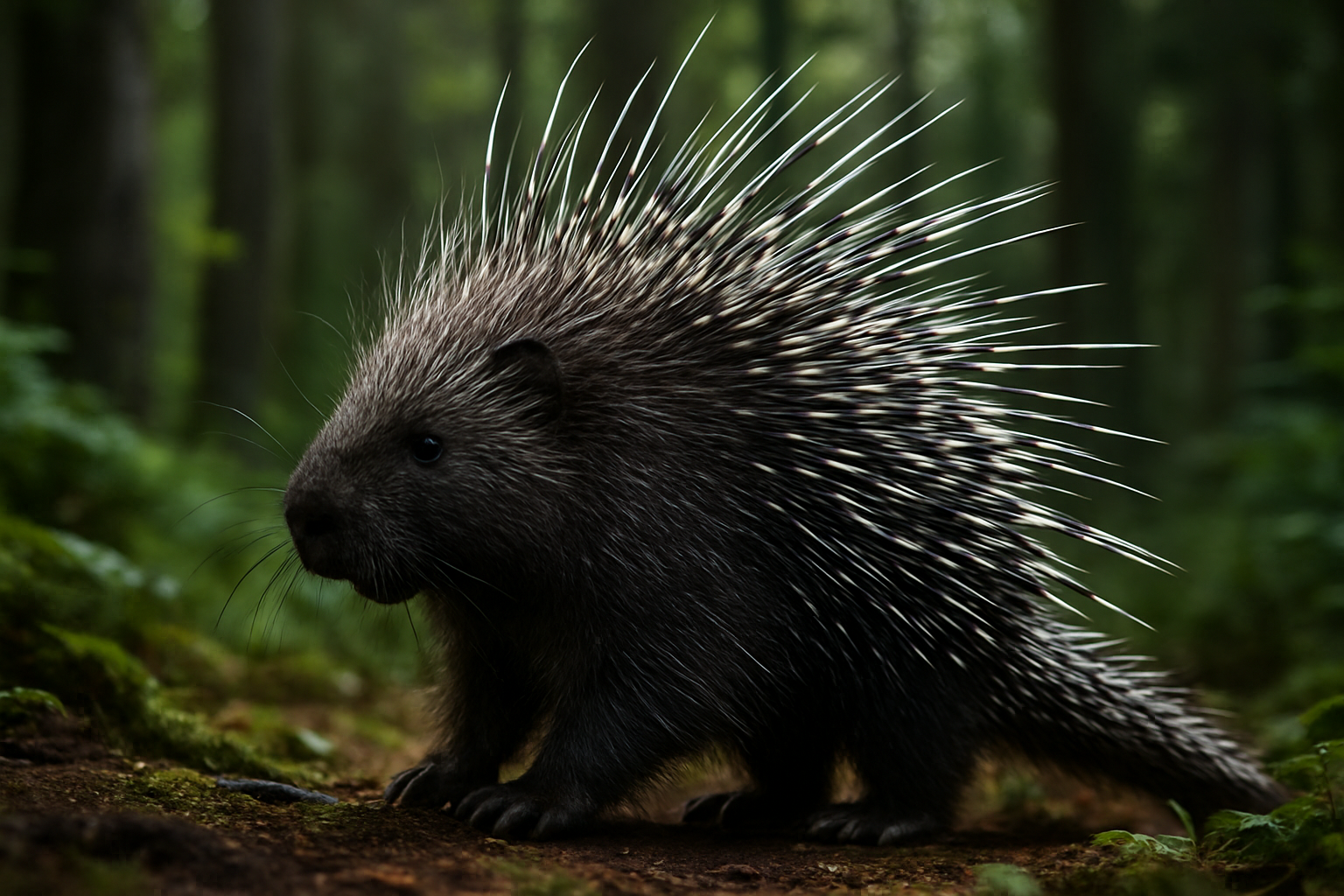Porcupine Quills: Nature's Ingenious Defense System
In the world of animal adaptations, few are as iconic and misunderstood as the porcupine's quills. These remarkable structures have captivated scientists and nature enthusiasts alike, offering a fascinating glimpse into the intricate ways evolution shapes survival strategies. From their unique microscopic structure to their role in porcupine behavior and ecology, quills represent a marvel of natural engineering that continues to inspire biomimicry and scientific research.

The Anatomy of a Quill
Porcupine quills are not simple spikes but complex structures with multiple layers. The outer layer consists of a hard, keratin-based shell, similar to human fingernails. Beneath this lies a spongy core that provides flexibility and strength. At the tip, microscopic barbs face backward, allowing the quill to easily penetrate flesh but making removal difficult and painful.
Each porcupine can have up to 30,000 quills, varying in length from 1 to 4 inches. These quills are concentrated on the back and tail, with softer fur covering the face, belly, and legs. Contrary to popular belief, porcupines cannot shoot their quills; instead, they rely on contact with predators to deploy their defensive weapons.
Evolution and Adaptation
The evolution of porcupine quills is a remarkable example of natural selection at work. Scientists believe that quills evolved from hair follicles over millions of years, gradually becoming thicker, harder, and more specialized. This adaptation provided a significant survival advantage, allowing porcupines to deter predators without the need for speed or agility.
Different species of porcupines have evolved variations in quill structure and deployment. For instance, New World porcupines found in the Americas have shorter, more densely packed quills, while Old World porcupines in Europe, Africa, and Asia tend to have longer, more sparsely distributed quills. These differences reflect the diverse environments and predator pressures faced by porcupines across the globe.
Quills in Action: Defense Mechanisms
When threatened, a porcupine’s first line of defense is intimidation. It will raise its quills, creating the illusion of increased size. If this fails, the porcupine may charge backward into the predator, embedding its quills into the attacker’s flesh. The barbed structure of the quills ensures that they become more deeply embedded with movement, causing increasing pain and potential infection.
Interestingly, porcupines have developed a clever method to avoid accidentally injuring themselves with their own quills. The quills are coated with an antibiotic fatty acid that helps prevent infection if the porcupine accidentally pricks itself. This adaptation showcases the intricate balance between offense and defense in nature.
Ecological Impact and Interactions
Porcupine quills play a significant role in shaping ecosystem dynamics. Predators that have encountered porcupines often learn to avoid them, leading to changes in hunting patterns and prey selection. This, in turn, can affect the population dynamics of other species in the ecosystem.
Moreover, quills that are shed or left behind after encounters with predators can serve secondary ecological functions. Small mammals may use these quills as nesting material, while birds have been observed incorporating them into their nests for added protection against nest predators.
Biomimicry and Medical Applications
The unique structure and properties of porcupine quills have not gone unnoticed by scientists and engineers. Researchers are studying quill design to develop new types of surgical staples and adhesives. The backward-facing barbs on quills provide inspiration for medical devices that can penetrate tissue easily but resist removal, potentially improving the effectiveness of certain treatments.
In the field of materials science, the quill’s ability to flex without breaking has led to investigations into creating more durable and lightweight materials for various applications, from body armor to aerospace components. These bio-inspired innovations highlight the potential for nature’s designs to solve human engineering challenges.
Conservation and Human Interaction
Despite their formidable defenses, porcupines face threats from habitat loss and human persecution. In some areas, they are considered agricultural pests due to their habit of gnawing on trees and crops. Education and conservation efforts are crucial to maintaining healthy porcupine populations and promoting coexistence with human activities.
Understanding the true nature and importance of porcupine quills can help shift public perception and support conservation initiatives. By appreciating the complexity and ingenuity of these natural marvels, we can foster a greater respect for porcupines and their role in ecosystems.
Conclusion
Porcupine quills represent one of nature’s most ingenious defense systems, a product of millions of years of evolution and adaptation. From their microscopic structure to their ecological impact and potential for biomimicry, quills continue to fascinate scientists and inspire new technologies. As we delve deeper into the mysteries of these remarkable structures, we not only gain insights into the wonders of the natural world but also find innovative solutions to human challenges. The humble porcupine and its quills remind us of the endless potential for discovery and innovation that exists in the study of nature’s marvels.





